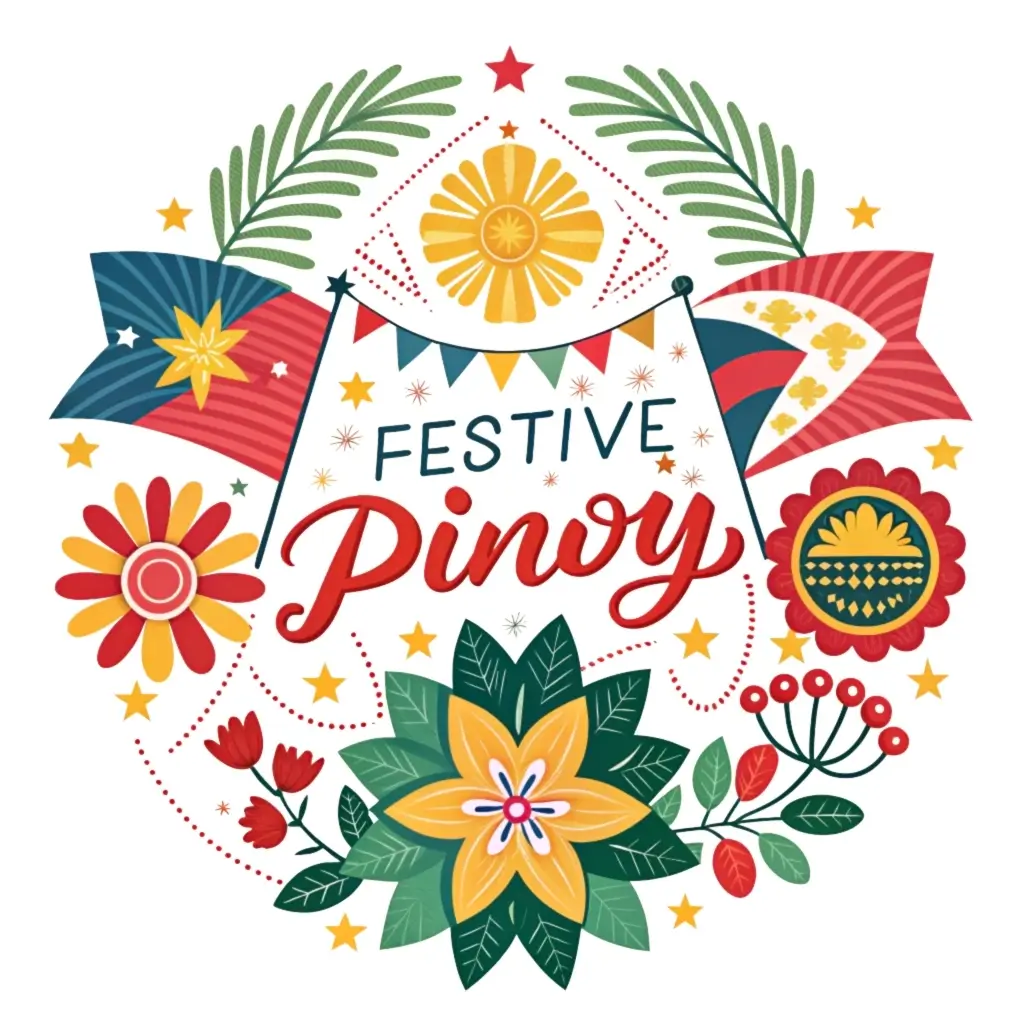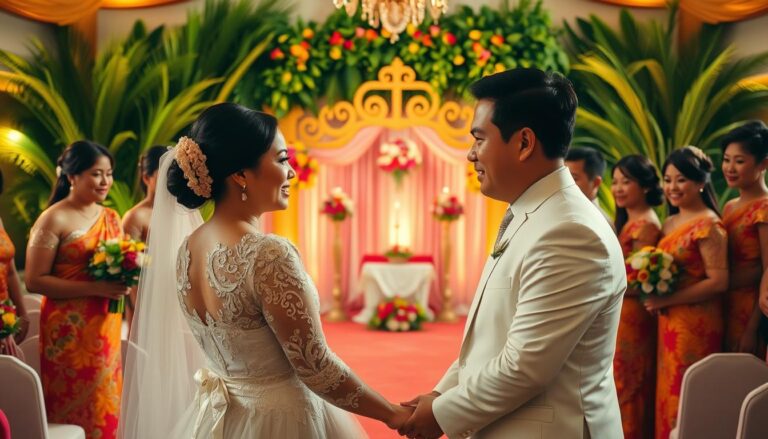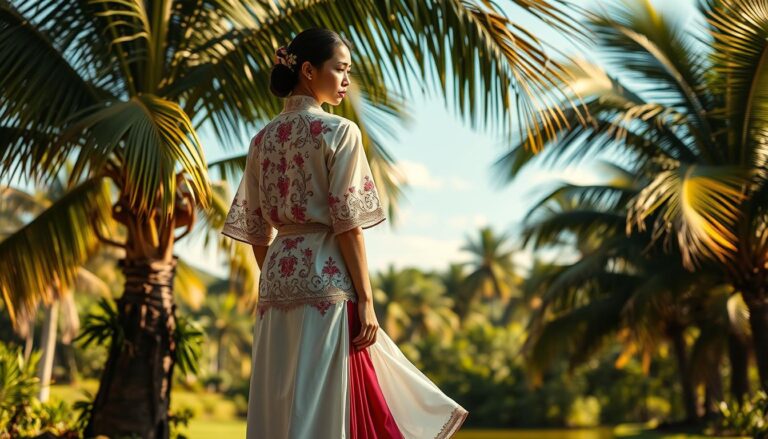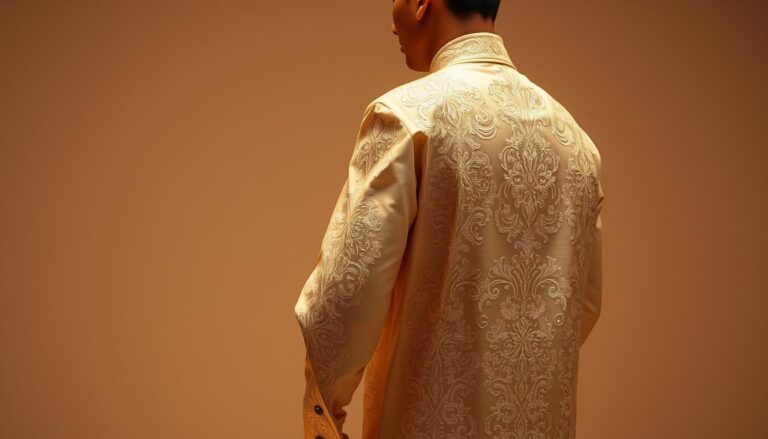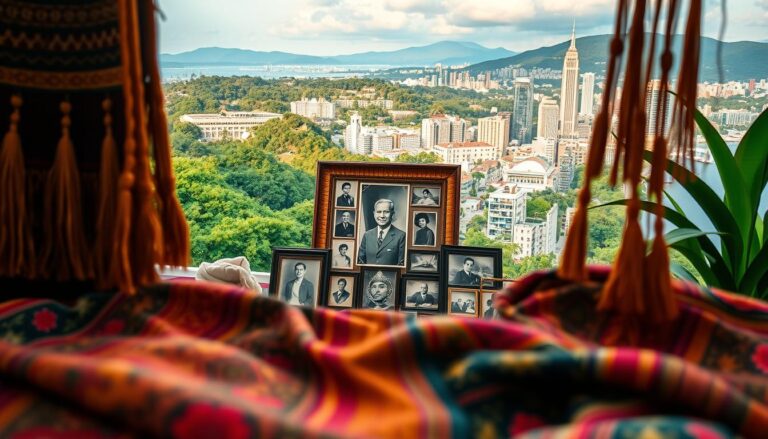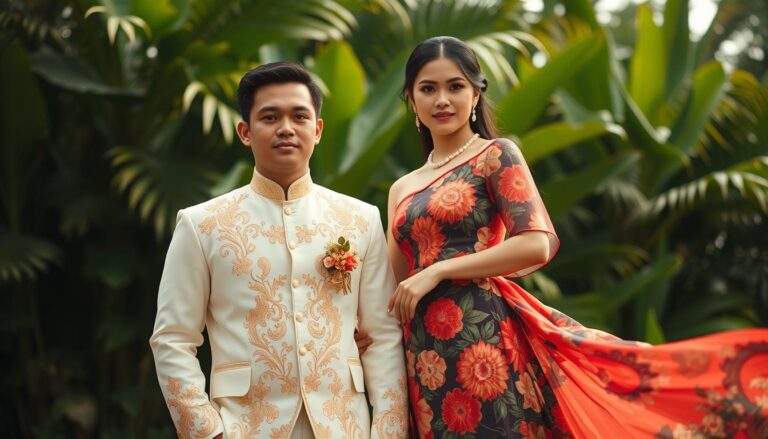Unique Jusilyn & Organza Barong Styles Explained
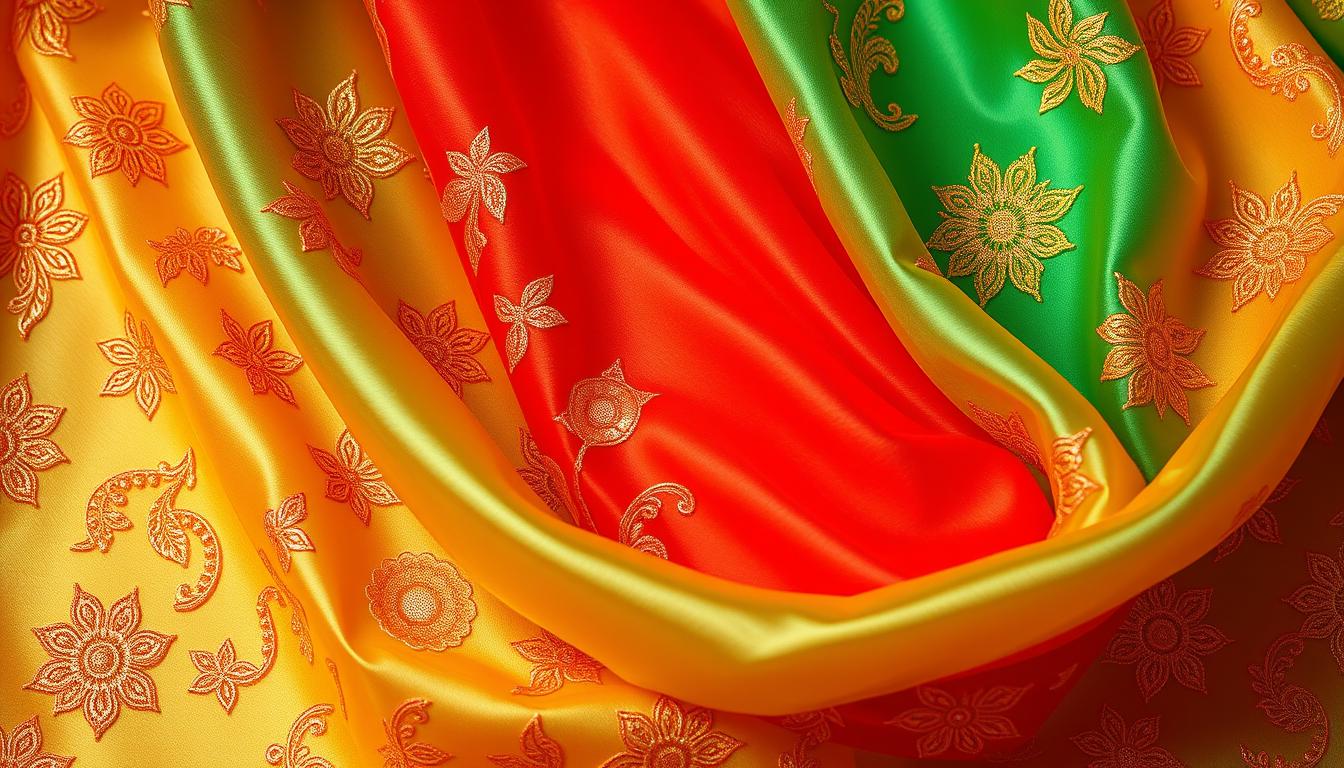
Selecting the right material for formal attire can elevate your entire look. For the Barong Tagalog, a staple in Filipino cultural fashion, fabric choice determines both comfort and sophistication. This guide explores how different textiles create distinct aesthetics while honoring centuries-old craftsmanship.
Traditional options like Piña – woven from pineapple fibers – offer delicate luxury, while modern alternatives like Jusi blend silk for durability. Each material serves different occasions, from weddings to casual events. Lighter weaves work for tropical climates, while denser fabrics provide structure for formal gatherings.
We’ll compare technical aspects like breathability, drape, and maintenance requirements. Discover how contemporary patterns integrate with hand-embroidered details without losing cultural authenticity. Whether you’re choosing attire for a special event or upgrading your wardrobe, understanding these elements ensures confidence in your selection.
Key Takeaways
- Fabric selection directly impacts the elegance and comfort of traditional formalwear
- Historical materials like pineapple-based Piña coexist with modern silk blends
- Sheer Organza and opaque Jusi serve different climate and occasion needs
- New design techniques preserve cultural embroidery while adding contemporary flair
- Proper material choice enhances both visual appeal and wearability
Fabric Foundations: Understanding Barong Tagalog Materials
Every Barong Tagalog tells a story through its textiles. The interplay of tradition and innovation emerges in four signature fabrics: Organza, Jusi, Jusilyn, and Piña. Each brings distinct qualities that shape the garment’s identity and wearability.
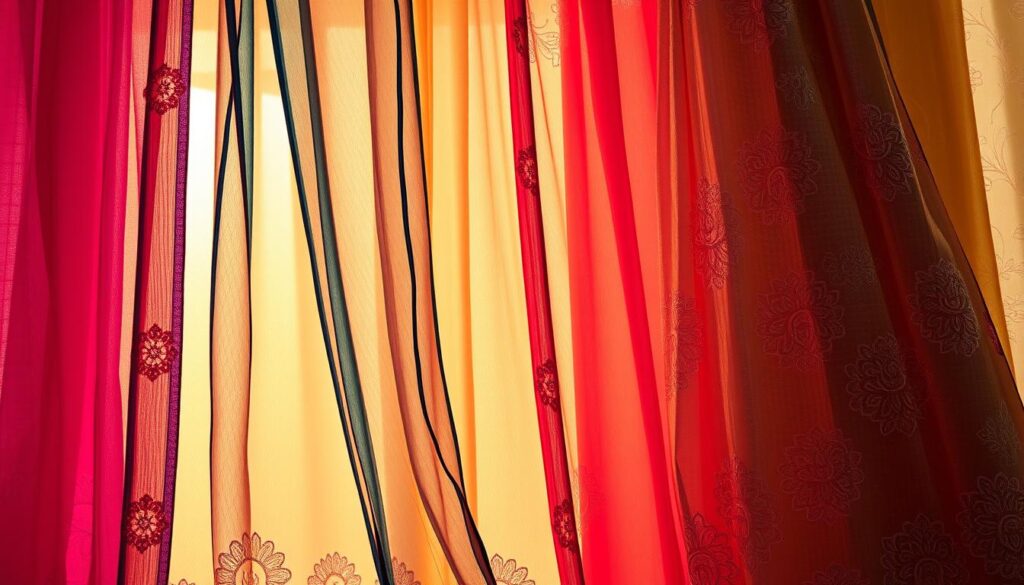
Weave Wisdom: Textile Traits Compared
Piña, spun from pineapple leaves, offers natural luminosity and a subtle golden hue. Though delicate, its breathability suits tropical climates. Jusi – crafted from abacá fibers – provides a polished finish but requires careful handling to prevent brittleness.
Modern alternatives like Jusilyn blend silk with polyester for affordability while mimicking traditional textures. Organza, often made from synthetic fibers, delivers crisp drape and glossy appeal at lower costs.
Balancing Beauty and Practicality
Traditional fabrics excel in durability but demand higher investment. Piña can cost 3-5 times more than Organza. Contemporary materials sacrifice some longevity for budget-friendly prices and easier maintenance.
Embroidery elevates each fabric differently. Delicate calado patterns shine on sheer Piña, while metallic threads stand out against Organza’s smooth surface. Tight weaves in Jusi better support intricate sombrado shadowwork.
Color and Craftsmanship
Natural fiber hues influence design possibilities. Piña’s warm undertones pair beautifully with earthy colors, while bleached Jusi serves as a neutral canvas. Synthetic blends offer brighter, consistent dye results but lack organic texture variations.
As Barong Warehouse experts note: “The right material choice preserves cultural heritage while meeting modern needs.” Whether prioritizing authenticity or accessibility, understanding these fabric fundamentals ensures informed decisions for any occasion.
Unique Jusilyn & Organza Barong Styles Explained: A Detailed Comparison
Understanding fabric nuances transforms how we appreciate traditional attire. Two materials dominate modern Barong Tagalog collections: the semi-synthetic Jusilyn and sheer Organza. Their distinct characteristics cater to diverse preferences and occasions.
Defining Jusilyn and Organza in Barong Designs
Jusilyn combines silk threads with polyester, creating a balanced fabric that mimics luxury textiles. This blend offers better opacity than pure silk variants. Manufacturers often interweave synthetic fibers to enhance durability while keeping costs accessible.
Organza uses tightly twisted synthetic or silk yarns for its signature crispness. The gauzy texture allows light penetration, creating ethereal silhouettes. Though visually striking, this material requires delicate handling during wear and cleaning.
Quality, Look, and Material Differences
Handling reveals immediate contrasts. Jusilyn drapes smoothly with subtle luster, resisting wrinkles better than most fabrics. Organza maintains rigid folds but shows creases easily. Both materials accept embroidery well, though denser Jusilyn supports heavier threadwork.
| Feature | Jusilyn | Organza |
|---|---|---|
| Composition | Silk-polyester blend | Pure silk/synthetic |
| Opacity | Semi-sheer | Transparent |
| Best For | Weddings, formal events | Performances, summer wear |
| Care | Machine wash cold | Professional dry clean |
| Price Range | $120-$400 | $100-$500 |
Color treatments behave differently across these types. Jusilyn holds dyes uniformly, ideal for solid hues. Organza’s translucent nature makes pastel shades popular, though metallic finishes add ceremonial elegance. A 2023 textile study showed Jusilyn retains vibrancy 30% longer after multiple washes.
Contemporary designers often layer Organza over contrasting linings for depth. Jusilyn stands alone as a self-sufficient garment, needing minimal accessories. Both options honor Filipino craftsmanship while addressing modern practicality needs.
Selecting the Perfect Barong: Styling Tips and Design Insights
Mastering Barong Tagalog styling begins with balancing cultural heritage and personal expression. Modern updates to this iconic garment allow wearers to honor tradition while showcasing individuality through strategic design choices.
Modern Designs and Color Choices
Contemporary palettes expand beyond classic whites. Dark gray and navy blue fabrics create sleek profiles for evening events, while sage green adds freshness to daytime weddings. Monochromatic schemes maintain sophistication, allowing intricate embroidery to shine.
Lightweight jusi fabric remains popular for its polished drape and breathability. Pair it with charcoal trousers for boardroom-ready looks or contrast with linen pants for casual elegance. Recent trends favor minimalist patterns with metallic thread accents that catch light subtly.
Styling for Different Occasions and Fits
Tailoring transforms how a Barong Tagalog interacts with your physique. Consider these adjustments:
| Occasion | Recommended Fabric | Pairing Tips |
|---|---|---|
| Weddings | Silk blends | Layer over mandarin-collar shirts |
| Business Events | Jusi variants | Match with tailored blazers |
| Casual Gatherings | Polyester mixes | Combine with rolled-sleeve shirts |
For formal receptions, opt for structured shoulders and slim cuts. Relaxed fits work better in tropical climates. A Filipino fashion curator notes: “The right sleeve length should graze the wrist bone – this small detail elevates the entire appearance.”
Complete your ensemble with leather loafers for weddings or canvas shoes for daytime events. These thoughtful combinations preserve cultural roots while adapting to modern styles.
Conclusion
Choosing the ideal Barong Tagalog requires balancing cultural heritage with personal needs. Modern fabrics like semi-sheer blends offer durability for frequent wear, while airy weaves suit tropical climates. Traditional pineapple-based textiles remain unmatched for ceremonial elegance, though contemporary options provide accessible sophistication.
Your occasion dictates the best material. Structured silk blends shine at wedding receptions, while breezy synthetics work for daytime events. Darker colors create polished profiles, while embroidery placement enhances cultural authenticity without overwhelming the design.
Consider these tips when selecting attire:
- Prioritize breathability for outdoor gatherings
- Match fabric weight to event formality
- Coordinate threadwork with body proportions
Every Barong Tagalog tells a story through its stitches and weaves. Whether opting for budget-friendly practicality or heirloom-quality craftsmanship, your choice celebrates Filipino artistry. Wear it with pride, knowing each fold honors tradition while embracing modern style.
